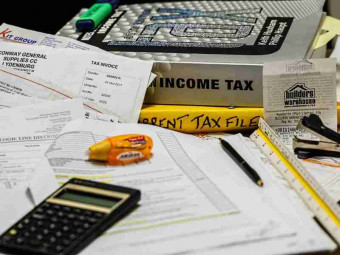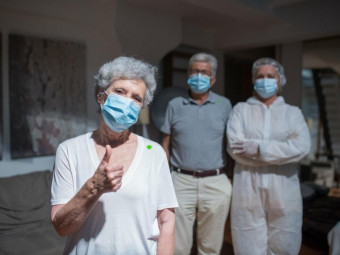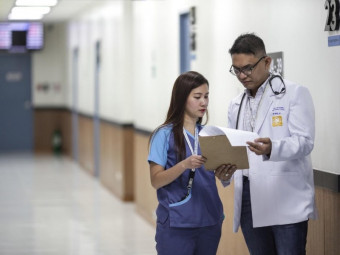Image Processing On Raspberry Pi
Tags: Raspberry Pi
Build Real-World Imaging Applications on Raspberry Pi - Captions in Spanish, Portuguese, Turkish, French, German, Hindi
Last updated 2022-01-10 | 4.2
- What is Raspberry Pi? and what are its components?- Understand peripherals that need to be connected to Raspberry Pi
- Wire up your Raspberry Pi to create a fully functional computer
What you'll learn
* Requirements
* Only High School Maths* No prior programming knowledge is expected
* All the code files and images used in this course will be provided
* Hardware needed: Raspberry Pi 3/2/Zero
* Monitor
* Mouse
* Keyboard
* HDMI-VGA connector
* USB flash drive (minimum storage capacity 2 GB)
* Micro SD card (minimum storage capacity 8 GB)
* Micro SD card reader
* Power adapter (2 Amp
* Micro-USB charger is preferred)
* USB Webcam (minimum 5 Megapixel resolution)
Description
Image Processing Applications on Raspberry Pi is a beginner course on the newly launched Raspberry Pi 4 and is fully compatible with Raspberry Pi 3/2 and Raspberry Pi Zero.
The course is ideal for those who are new to the Raspberry Pi and want to explore more about it.
You will learn the components of Raspberry Pi, connecting components to Raspberry Pi, installation of NOOBS operating system, basic Linux commands, Python programming and building Image Processing applications on Raspberry Pi.
This course will take beginners without any coding skills to a level where they can write their own programs.
Basics of Python programming language are well covered in the course.
Building Image Processing applications are taught in the simplest manner which is easy to understand.
Users can quickly learn hardware assembly and coding in Python programming for building Image Processing applications. By the end of this course, users will have enough knowledge about Raspberry Pi, its components, basic Python programming, and execution of Image Processing applications in the real time scenario.
The course is taught by an expert team of Electronics and Computer Science engineers, having PhD and Postdoctoral research experience in Image Processing.
Anyone can take this course. No engineering knowledge is expected. Tutor has explained all required engineering concepts in the simplest manner.
The course will enable you to independently build Image Processing applications using Raspberry Pi.
This course is the easiest way to learn and become familiar with the Raspberry Pi platform.
By the end of this course, users will build Image Processing applications which includes scaling and flipping images, varying brightness of images, perform bit-wise operations on images, blurring and sharpening images, thresholding, erosion and dilation, edge detection, image segmentation. User will also be able to build real-world Image Processing applications which includes real-time human face eyes nose detection, detecting cars in video, real-time object detection, human face recognition and many more.
The course provides complete code for all Image Processing applications which are compatible on Raspberry Pi 3/2/Zero.
Who this course is for:
- Anyone who wants to explore Raspberry Pi and interested in building Image Processing applications
Course content
7 sections • 54 lectures
Components on Raspberry Pi 3 Preview 01:14
Components to be connected to Raspberry Pi Preview 01:03
Downloading Software to Format SD Card Preview 02:03
Formatting SD Card Preview 01:53
Downloading NOOBS Operating System Preview 02:52
Copying NOOBS Operating System to SD Card Preview 01:25
Flashing NOOBS Operating System to SD Card Preview 02:47
Installing Packages Preview 07:07
Download Course Codes and Images Preview 00:15
Download the file Codes.zip to your computer.
Unzip the downloaded Codes.zip file to your computer.
The unzipped folder Codes contains all the Python programs and images used in the course.
Copy the folder Codes from your computer to USB flash drive.
Insert the USB flash drive to Raspberry Pi.
Copy the folder Codes from USB flash drive to Raspberry Pi.
Print Preview 05:46
Quiz for Print
If Condition Preview 04:44
Making Decisions Preview 08:50
Quiz for Making Decisions
For loop Preview 10:18
While loop Preview 07:33
Quiz for While loop
Functions Preview 09:44
Quiz for Functions
Dictionaries Preview 07:08
Objects Preview 05:13
Class Preview 06:15
Modules Preview 02:47
Quiz for Modules
Load Display Save Images Preview 09:43
Scaling Preview 12:59
Quiz for Scaling
Flipping Preview 09:09
Varying Brightness Preview 11:07
Quiz for Varying Brightness
Bitwise Operations Preview 14:25
Blurring and Sharpening Preview 09:18
Quiz for Blurring and Sharpening
Thresholding Preview 07:15
Erosion and Dilation Preview 08:11
Quiz for Erosion and Dilation
Edge Detection Preview 06:04
Image Segmentation Preview 09:50
Quiz for Image Segmentation
Real-time Human Face Eyes Nose Detection Preview 18:14
Detecting Cars in Video Preview 11:07
Pedestrian Detection Preview 10:40
Real-time Object Detection Preview 23:36
Human Face Recognition -1 Preview 17:00
Human Face Recognition - 2 Preview 15:48
Deep Learning Resources Preview 00:03
Generative Adversarial Networks Resources Preview 00:03
Deep Reinforcement Learning Resources Preview 00:03
Machine Learning Resources Preview 00:03
Data Science Resources Preview 00:03
TensorFlow Lite Resources Preview 00:03
Movidius Neural Compute Stick Resources Preview 00:03
Quantum Machine Learning Resources Preview 00:03
How to crop an image at specific pixel coordinates?
Crop images at specific pixel coordinates using the format: starting_Y:ending_Y, starting_X:ending_X








 This course includes:
This course includes:
![Flutter & Dart - The Complete Guide [2022 Edition]](https://img-c.udemycdn.com/course/100x100/1708340_7108_5.jpg)















